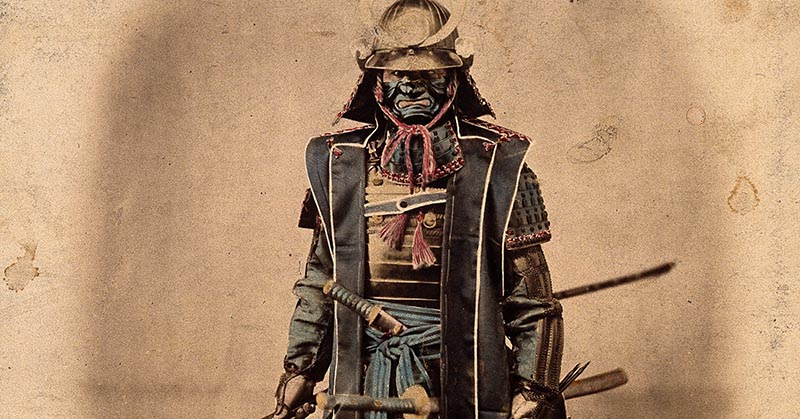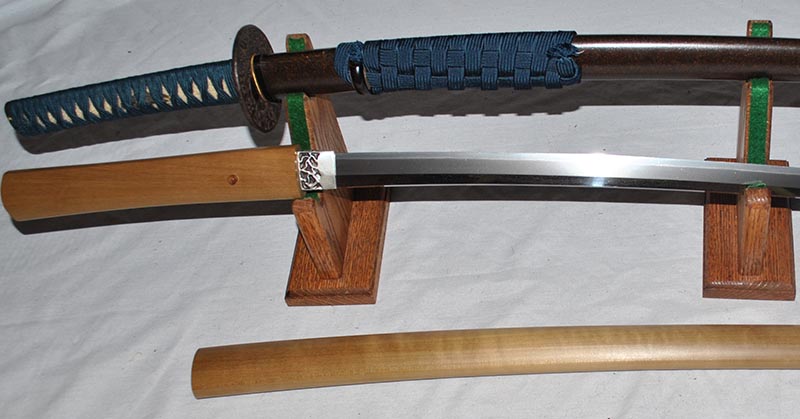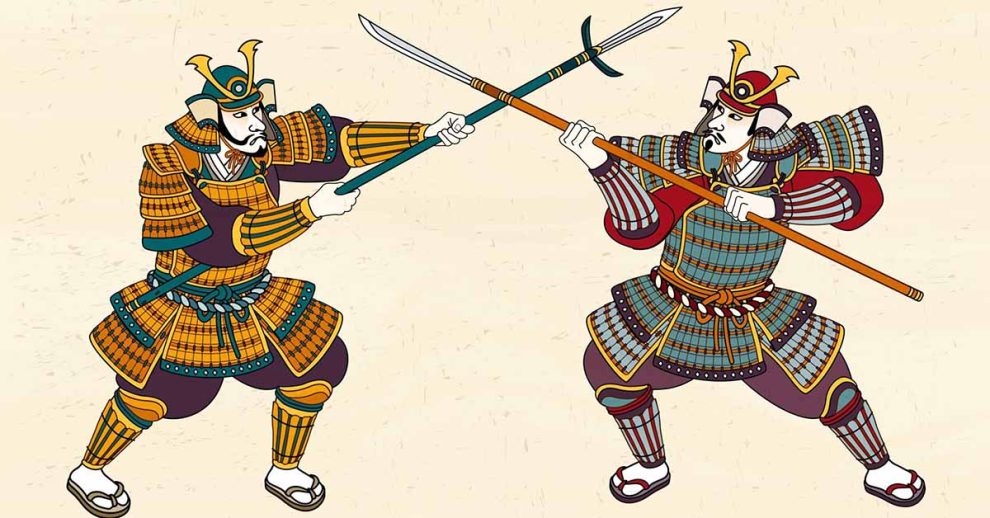For nearly a thousand years, the samurai were the elite warrior class of Japan—feared in battle, revered in society, and bound by a strict code of honor known as Bushidō. Emerging in the Heian period (around the 10th century), the word samurai derives from the Japanese verb saburau, meaning “to serve.” These warriors were not merely soldiers; they were retainers who served powerful landowners known as daimyō, and, by extension, the imperial court or the ruling shogunate. Their roles spanned military duties, administrative responsibilities, and cultural pursuits such as poetry, calligraphy, and tea ceremony.
Over time, the samurai evolved from mounted archers to master swordsmen, becoming a hereditary class that held significant social and political influence during Japan’s feudal era. Their top-down loyalty structure and the privileges they enjoyed—including the right to carry swords and mete out justice—cemented their dominance. However, with the modernization of Japan in the late 19th century, the samurai class was formally abolished, though their legacy still looms large in Japanese culture and identity.
The following facts delve into some of the most astonishing, lesser-known, and unforgettable stories from the world of the samurai.
Surnames for All in 1868

1. Until 1868, only Japanese nobles and samurai families had surnames. That year, the government mandated that commoners adopt surnames, leading to a wide variety of names. These names were often inspired by locations, occupations, or were simply invented, contributing to the over 100,000 Japanese surnames in existence today.
2. In the Spanish town of Coria del Río, around 700 residents trace their ancestry to six 17th-century samurai. These samurai settled there after a Japanese embassy returned home, and their descendants carry the surname “Japón,” originally derived from “Hasekura de Japón.”
3. From 1613 to 1620, the Japanese samurai Hasekura Tsunenaga embarked on a historic journey to Rome via Mexico. During his visit, he met the Pope and was granted Roman citizenship. This marked the last official Japanese visit to Europe until 1862.
4. At the height of their influence, samurai made up about 10% of Japan’s population. Consequently, nearly all Japanese people today can trace their ancestry back to samurai.
5. Samurai wore clothing dyed with indigo for practical reasons. This dye not only made their garments antibacterial but also flame-resistant up to 1500 degrees Fahrenheit. Additionally, indigo helped repel odor and dirt, making it an ideal choice for samurai attire.
6. The character from “The Ring” was inspired by the legend of Okiku, a servant to a samurai. After rejecting his advances, the samurai threw her down a well. Legend has it that she haunted him by crawling out of the well every night, seeking revenge.
7. Toyotomi Hideyoshi, a military leader who unified Japan, never received the title of Shogun. Despite his accomplishments, he lacked traceable samurai lineage, as his father was an ashigaru, a peasant foot soldier. His rise to power remains a remarkable story in Japanese history.
8. Yasuke, a slave from Mozambique, became the first black samurai in Japan. He served under the warlord Oda Nobunaga and was the first foreigner to achieve samurai status. Yasuke’s story inspired the main character in the series “Afro Samurai.”
9. Samurai in Japan existed in the same time frame in history with cowboys in the American Old West.
10. Contrary to popular belief, ninjas did not wear black masks. This image is based on the attire of thieves in Japan. Furthermore, shuriken, or throwing stars, were primarily used by samurai swordsmen, not ninjas.
Samurai: Masters of Aesthetic Combat

11. Samurai were not only trained in the art of killing but also taught to perform it aesthetically. They considered killing an art form essential for achieving self-perfection.
12. Sakamoto Ryōma, an influential samurai, admired the American system and encouraged the Imperial Court to emulate it. During the first assassination attempt on his life, he successfully defended himself with a Smith & Wesson revolver. Unfortunately, a second attempt caught him off guard, leading to his death.
13. Yanagizawa Yoshisato, a resourceful samurai, helped his clan pay off debts by selling goldfish. He transported his best goldfish breeders to the town of Koriyama, utilizing its abundant waters for breeding. This initiative made goldfish accessible to the general public, not just the wealthy elite.
14. Until 1602, samurai could test their new swords and fighting styles by killing random people, a practice known as Tsujigiri. This brutal method served as a test of both the sword’s sharpness and the samurai’s skill. However, the practice was eventually outlawed due to its indiscriminate violence.
15. In Japan, samurai had the right to execute commoners who showed them disrespect. This right persisted until the 1870s when Japan modernized its military, abolishing the samurai class. The new national fighting force followed Western standards, marking the end of this feudal privilege.
16. Shogun Tokugawa Ieyasu declared William Adams, the first Western samurai, dead, and Miura Anjin, a samurai, born. This decree allowed Adams to serve the Shogunate permanently, effectively making his wife in England a widow. Despite this, Adams sent her regular support payments after 1613.
17. Samurai wore cloaks that inflated when they rode horses, providing protection from arrows shot from behind.
18. Miyamoto Musashi, a renowned 16th-century samurai, won over 60 duels and fought in two wars. He is credited with inventing the art of psyching out opponents and dual-wielding katanas. Remarkably, he killed his first man at the age of 13, marking the beginning of his legendary career.
19. The Heikegani is a Japanese crab species that evolved a shell resembling a samurai warrior’s face. Fishermen admired these crabs and often returned them to the ocean, allowing them to thrive. This unique evolutionary trait ensured their survival.
20. In early feudal Japan, a class of female samurai known as Onna-Bugeisha fought alongside men. They were trained in weaponry to protect their households, families, and honor during wartime. These women played a crucial role in the defense and preservation of their communities.
Knives Sharper than Swords

21. Japanese kitchen knives are notably sharper than katana swords. This is due to the shift in craftsmanship that occurred in the 19th century when blacksmiths began focusing on knife production after the samurai were prohibited from carrying swords. This change was part of Japan’s modernization efforts following the Meiji Restoration.
22. Genghis Khan’s empire was so expansive that it included regions as far apart as Prussia and Japan. During his reign, the Teutonic Knights in Prussia and samurai in Japan both engaged in battles against the Mongols. However, these distant warriors were unaware of each other’s existence.
23. A samurai named Seigo Yamazawa fought alongside the Bulgarians during the Russo-Turkish War of 1877–78. His participation contributed to Bulgaria’s eventual liberation from Ottoman rule. Today, a bust honoring Yamazawa stands in the Burgas region.
24. After the samurai class was dismantled in Japan, many former samurai transitioned to farming. In the town of Aomori, they received apple seedlings to cultivate and produce apples. As a result, Aomori eventually became renowned as Japan’s apple capital.
25. In Japan, the term “rōnin” originally referred to a samurai without a master. Today, it also describes someone who is unemployed.
Sources: 1, 2, 3, 4, 5, 6, 7, 8, 9, 10, 11, 12, 13, 14, 15, 16, 17, 18, 19, 20, 21, 22, 23, 24, 25





Add Comment